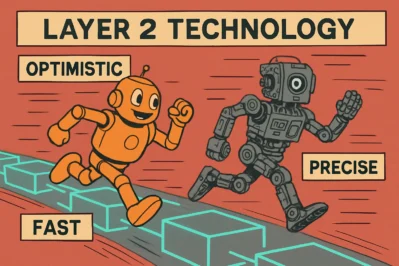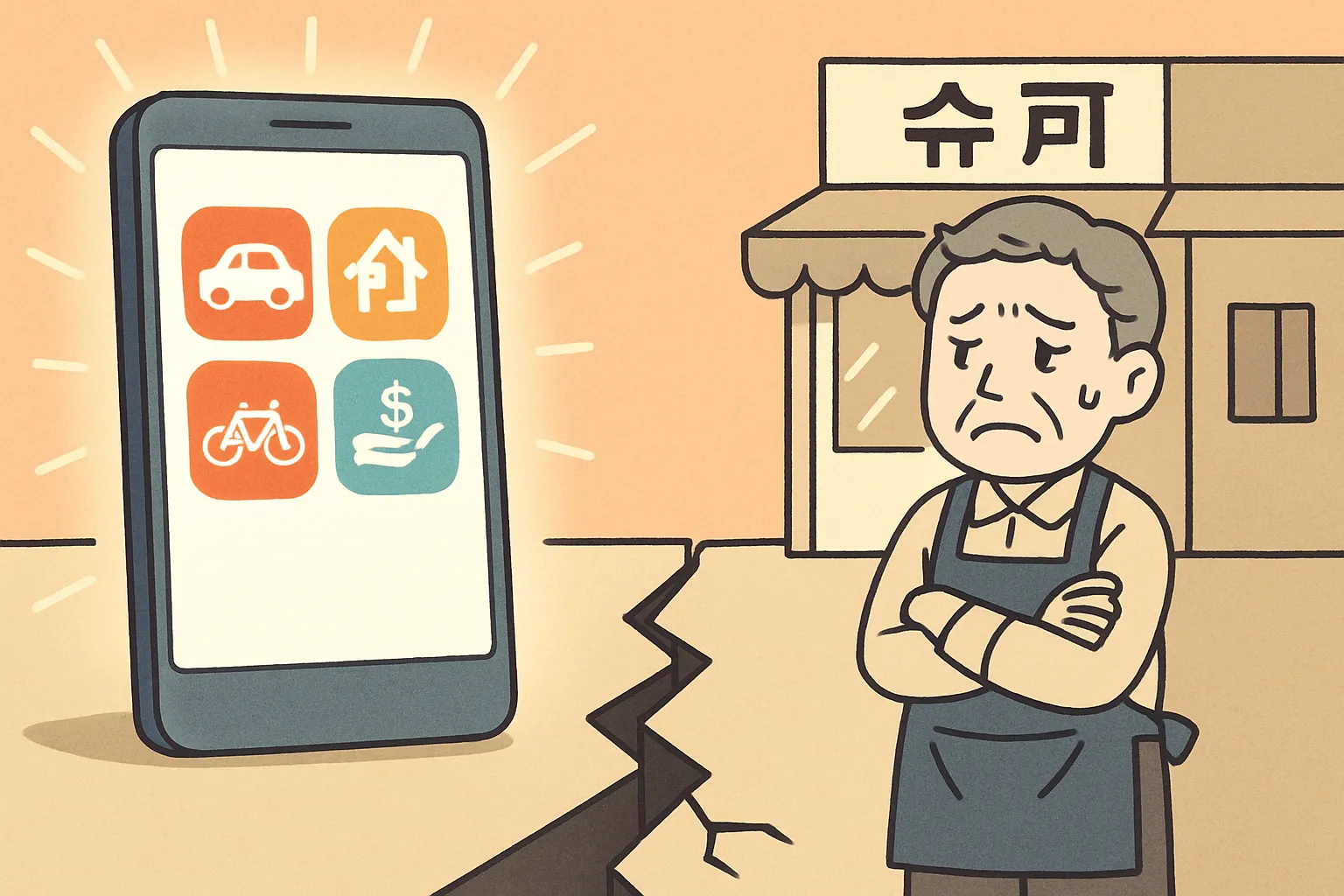Layer 2 Showdown: Talk Tech Like a Korean Pro
Hello! Welcome to Maeil Hangul, where we upgrade your Korean skills every day!
Are you interested in tech, crypto, or blockchain? Want to discuss complex topics with your Korean colleagues or friends like a native? Today, we’re diving deep into a high-level topic: comparing Layer 2 scaling solutions in blockchain. This is perfect for when you’re in a business meeting, attending a tech conference in Seoul, or just want to impress your friends with your specialized knowledge.
Lately in Korea, the debate between different Layer 2 solutions, especially Optimistic Rollups versus ZK-Rollups, is a hot topic in major tech communities and even within companies like Kakao and Naver. Understanding how to discuss their technical principles in Korean will put you way ahead of the curve. Let’s get started!
Core Expressions for Your Tech Talk
Here are the essential phrases you’ll need to navigate this technical discussion.
- 한국어 표현: 확장성 (Hwak-jang-seong)
- 발음 [로마자]: [hwak-jjang-seong]
- 영어 뜻: Scalability
- 상세 설명: This is a crucial term in any discussion about networks or systems. It refers to a system’s ability to handle a growing amount of work. It’s a compound word: 확장 (hwak-jang) means ‘expansion’ or ‘extension’, and -성 (-seong) is a suffix that means ‘-ability’ or ‘-ness’. You’ll hear 확장성 문제 (hwak-jang-seong mun-je), meaning “scalability problem,” very often.
-
한국어 표현: ~에 비해 (~e bi-hae)
- 발음 [로마자]: [~e bi-hae]
- 영어 뜻: Compared to~ / In comparison with~
-
상세 설명: This is a fundamental grammar pattern for making comparisons. You attach it to the noun you are comparing against. It’s a slightly formal and very clear way to structure a comparative sentence, making it perfect for professional or technical reports and discussions. For example, “A에 비해 B는…” (Compared to A, B is…).
-
한국어 표현: 장단점 (Jang-dan-jeom)
- 발음 [로마자]: [jang-dan-jeom]
- 영어 뜻: Pros and cons / Advantages and disadvantages
-
상세 설명: This is another essential compound word. 장점 (jang-jeom) means ‘advantage’ or ‘strong point’, while 단점 (dan-jeom) means ‘disadvantage’ or ‘weak point’. Putting them together as 장단점 is the most common way to say “pros and cons.” You can talk about the 장단점이 뚜렷하다 (jang-dan-jeom-i ttu-ryeot-ha-da), which means “the pros and cons are clear.”
-
한국어 표현: 데이터 가용성 (De-i-teo ga-yong-seong)
- 발음 [로마자]: [de-i-teo ga-yong-seong]
- 영어 뜻: Data Availability (DA)
- 상세 설명: This is a highly technical term, perfect for showing off your C1 level! It’s a direct translation of “Data Availability” from English. 데이터 (de-i-teo) is “data,” and 가용성 (ga-yong-seong) means “availability.” In the context of rollups, it refers to the guarantee that the transaction data is available for anyone to inspect, which is crucial for security.
Example Dialogue: At a Tech Startup
Let’s see how these expressions are used in a real conversation between two developers, Min-jun and Ji-hye.
민준 (Min-jun): 지혜 씨, 새로 나온 ZK-Rollup 기술 백서 읽어봤어요? 이더리움 확장성 문제를 해결할 핵심 기술이라고 하던데요.
(Ji-hye, have you read the new whitepaper on ZK-Rollup technology? They say it’s the key tech to solve Ethereum’s scalability problem.)
지혜 (Ji-hye): 네, 봤어요. 기존 옵티미스틱 롤업에 비해 거래 완결성(finality)이 즉각적이라는 게 가장 큰 장점 같아요.
(Yes, I have. Compared to existing Optimistic Rollups, I think its biggest advantage is the instant transaction finality.)
민준 (Min-jun): 맞아요. 하지만 모든 기술에는 장단점이 있죠. ZK-Rollup은 연산이 복잡해서 아직은 범용성이 좀 떨어지잖아요.
(That’s right. But every technology has its pros and cons. ZK-Rollups are computationally complex, so they lack general-purpose utility for now.)
지혜 (Ji-hye): 그렇죠. 그리고 데이터 가용성을 어떻게 보장하느냐도 중요한 쟁점이고요. 두 솔루션의 발전 방향을 계속 지켜봐야겠어요.
(I agree. And how they guarantee data availability is also a key issue. We’ll have to keep watching how both solutions evolve.)
Korean Tech Culture Deep Dive
When discussing technology in Korea, especially in online forums like ‘클리앙 (Clien)’ or professional settings, being able to present a balanced argument is highly valued.
Using the term 장단점 (jang-dan-jeom) isn’t just about listing good and bad points. It shows that you have a nuanced and comprehensive understanding of the topic. In a meeting, instead of saying “이 기술은 나빠요 (This tech is bad),” a more professional approach would be, “이 기술의 단점은… (The disadvantage of this tech is…).”. This demonstrates critical thinking and objectivity.
Also, notice how English loanwords like 데이터 (de-i-teo) and technical terms are mixed directly with Korean grammar. This is extremely common in Korean professional environments. Mastering this blend will make you sound incredibly natural and competent.
Let’s Review & Practice!
Great job today! We’ve learned some advanced vocabulary and grammar to discuss the complex topic of Layer 2 solutions. You now know how to talk about 확장성 (scalability), compare things using ~에 비해, and analyze the 장단점 (pros and cons) of different technologies.
Now, it’s your turn to practice!
- Sentence Building: Try making a sentence that compares two cryptocurrencies (e.g., Bitcoin and Ethereum) using ~에 비해 and 장단점.
- Fill in the Blank: 레이어 2 솔루션은 블록체인의 ___________와 거래 수수료 문제를 해결하는 것을 목표로 합니다. (Layer 2 solutions aim to solve the blockchain’s ___________ and transaction fee problems.)
Leave your answers in the comments below using the expressions we learned today! We’d love to see what you come up with. Keep up the fantastic work






